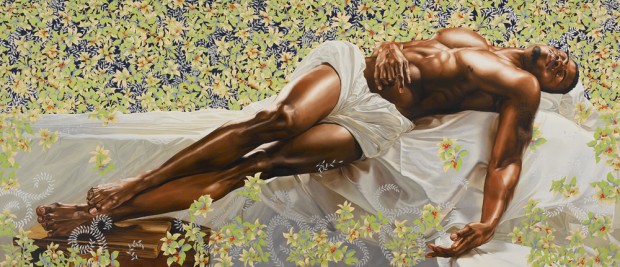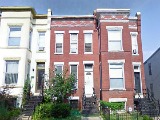Many of D.C.’s young people who live way below the poverty line, aren’t in school or looking for work are black, a new report finds.
Researchers at The Brookings Institution examined these disparities in an effort to propose some solutions. About 28,000 D.C. residents aged 16 to 24 lack a bachelor’s degree and live 200 percent below the poverty line. And 22,000 of those young people are black.
Low-income D.C. black youth lacking bachelor’s degrees
The Brookings folks propose a few solutions, and among them is abandoning the “college for all approach.” But, as they note, there is a history of discrimination when it comes to who has been deemed worthy of higher education (emphasis mine):
Integrating employment and occupational skills into the high school and post-secondary curricula is often disparaged, with career and technical education (previously known as vocational education) seen as a dumping ground for students not deemed “college-ready.” The legacy of tracking, segregation, and discrimination in the educational system certainly provides support for that view— education can be a vehicle for upward mobility but it can also perpetuate inequality based on race and class.
Here are a few more recommendations in the report:
Continue reading →
Chain retailer Ross Dress for Less hired unemployed D.C. residents to work in a new Ward 5 store. The August unemployment rate in Ward 5 was 14.6 percent.

Mayor Vincent Gray’s office says the company has hired more than 60 D.C. residents, 42 of which were unemployed. Five of its six managers are also D.C. residents.
The hires are part of the Mayor’s One City, One Hire initiative that encourages employers to hire at least one unemployed District resident.
— www.bizjournals.com
October 6, 2011 | 7:40 AM | By Anna
Good morning, DCentric readers! Here are some of the stories we’re reading, right now:
Rev. Fred L. Shuttlesworth, Civil Rights Leader, Dies at 89 “He was Martin Luther King’s most effective and insistent foil: blunt where King was soothing, driven where King was leisurely, and most important, confrontational where King was conciliatory — meaning, critically, that he was more upsetting than King in the eyes of the white public.” (The New York Times)
Sesame Street Takes On Hunger | ThinkProgress “There may be two Americas, but it’s not as if they’re on opposite sides of a wall. Teaching kids not to assume that everyone has the same level of resources is a valuable lesson in social awareness. So many signifiers of coolness — clothes, birthdays, activities, cars, housing — are really signifiers of wealth, and in a deep and prolonged recession, poverty makes you socially as well as materially vulnerable.” (Think Progress)
The safety gap: David Kennedy talks fighting violent crime | The Informant “The ‘safety gap’ is akin to the ‘wealth gap,’ [author David M.] Kennedy explained. As our society has become more economically prosperous, the gap between the haves and the have-nots has grown wider, leaving certain communities behind. Similarly, while much of the country has gotten safer, in certain neighborhoods and certain communities, things have gotten worse.” (The Informant)
Continue reading →
Our sister site Multi-American discusses the increase of multi-generational households, particularly among foreign-born residents.

What is a multi-generational household? It’s when Abuela lives upstairs and helps take care of the kids, or when your parents take your unemployed brother back in, or any combination involving two or more adult generations under one roof. Or sometimes it’s a skipped-generation household, with grandparents raising a grandchild.
And these households are on the rise, with Latinos and Asians topping the list of those most likely to do it.
— multiamerican.scpr.org

Courtesy of Rubell Family Collection, Miami.
Kehinde Wiley, Sleep, 2008. Oil on canvas, 132 x 300 inches.
The ongoing “30 Americans” exhibit that recently opened at the Corcoran Gallery of Art showcases work by some of most important African American artists of the past 30 years.
The 76 pieces of art are owned by Donald and Mera Rubell, who hold one of the world’s largest, private art collections. Mera Rubell tells WAMU’s Metro Connection that they noticed a trend in their collection about five years ago:
Continue reading →
A tough new immigration law in Alabama recently went into effect, with provisions that include requiring schools to verify immigration status at registration. The New York Times‘ Campbell Robertson sends this report from one Alabama town affected by the law.

The vanishing began Wednesday night, the most frightened families packing up their cars as soon as they heard the news.
They left behind mobile homes, sold fully furnished for a thousand dollars or even less. Or they just closed up and, in a gesture of optimism, left the keys with a neighbor. Dogs were fed one last time; if no home could be found, they were simply unleashed.
Two, 5, 10 years of living here, and then gone in a matter of days, to Tennessee, Illinois, Oregon, Florida, Arkansas, Mexico — who knows? Anywhere but Alabama.
The exodus of Hispanic immigrants began just hours after a federal judge in Birmingham upheld most provisions of the state’s far-reaching immigration enforcement law.
— www.nytimes.com

Leo Reynolds / Flickr
Author Touré will be discussing his new book “Who’s Afraid of Post-Blackness?” at Busboys and Poets at 14th and V streets, NW tonight. The book is an interesting read delving into what it means to be black in America today, but even before you get to the meat of it, Touré includes this author’s note:
I have chosen to capitalize the word “Black” and lowercase “white” throughout this book. I believe “Black” constitutes a group, an ethnicity equivalent to African-American, Negro, or, in terms of a sense of ethnic cohesion, Irish, Polish, or Chinese. I don’t believe that whiteness merits the same treatment. Most American whites think of themselves as Italian-American or Jewish or otherwise relating to other past connections that Blacks cannot make because of the familial and national disruptions of slavery. So to me, because Black speaks to an unknown familial/national past it deserves capitalization.
Capitalizing “black” goes against the typical standard used by media outlets and outlined by the AP Stylebook (which DCentric abides by). But some believe both “black ” and “white” should be capitalized to defer respect and equity — Hispanic and Native American are capitalized, after all.
Such grammatical standards aren’t set in stone; it wasn’t that long ago that “Negro” was the preferred term. Sometimes popular word usage slowly evolves, and other times, specific movements seek to influence word usage. For instance, the “Drop the I-Word” campaign is pushing media outlets to stop using the term “illegal aliens.” (The Society of Professional Journalists recently joined their call).
What’s your take: do you believe “black” should be capitalized? What about “white?” Does it even matter?
D.C. has fewer available apartments for rent, and the ones that are available have gotten more expensive. That’s according to a new report by Delta Associates, which shows rents rose by 5.4 percent in the District and 3.6 percent around in region over the past 12 months.

According to Delta Associates’ third quarter report, rents in the DC area for Class A and B apartments have risen 3.6 percent over the past twelve months while vacancy rates sit at 2.8 percent, the lowest for any metro area in the country except for New York City.
— dc.urbanturf.com
The American Planning Association has named U Street in D.C. as one of its 2011 Great Places in America. The corridor was the “epicenter of African American businesses, entertainment, and civic and religious life” during segregation and earned the moniker “Black Broadway.” The 1968 riots left the street, like much of the District, in an economic decline. But the recent revival of U Street resulted in many longtime black residents moving or being displaced.
In 2009 when president-elect Barack Obama ordered a chili half-smoke at the famous Ben’s Chili Bowl along U Street N.W., crowds flocked to the legendary eatery and the street it has anchored since 1958. U Street has gone through difficult times, particularly the lingering aftermath of devastating riots following the 1968 assassination of Dr. Martin Luther King, Jr. Today the street is pulsing again with the music, businesses and life that, in the early 1900s, distinguished it as the main street of Washington’s “city within a city.”
— www.planning.org
October 4, 2011 | 8:55 AM | By Anna
After-School Program Receives Grant, Expands to Ward 8 “An afterschool program that already serves approximately 800 students in 27 schools across the District, is expanding to accommodate students in Ward 8.” (Washingtoninformer.com)
Hate speech against Muslims incites violence “Similar smear campaigns by intellectuals, social and political leaders targeted Native Americans, African Americans, Jews and Japanese Americans. These cases wrought untold destruction, until they were revealed as false and horrifying in the extreme.” (The Washington Post)
Occupy DC Protestors Gather In McPherson Square “They call themselves the 99 percent, and in New York, in LA, in Denver, and in DC they’re rebelling against a power structure that’s allowed the top one percent of Americans to amass more than a third of the nation’s wealth.” (WUSA Washington, DC)
Graham requests new audit on Peaceoholics “The group received $13.8 million from seven city agencies and the Children and Youth Investment Trust Corp. from 2005 to 2010, most during the term of Mayor Adrian M. Fenty.” (Washington Times)
The power and pain of the N-word “The word is weighty and powerful and harkens back to a time when whites could do whatever they wanted to black people—call them any name, beat them, rape them and even kill them with impunity.” (The Washington Post)








